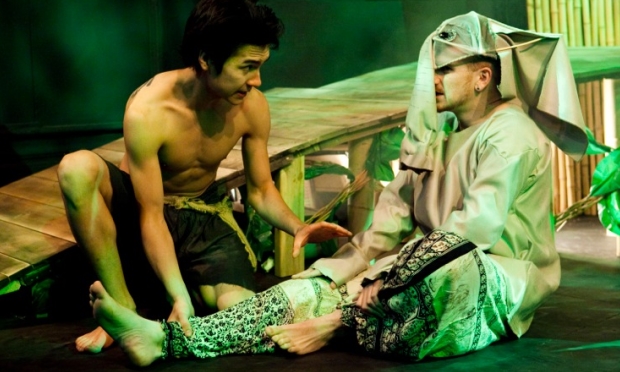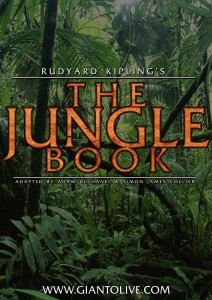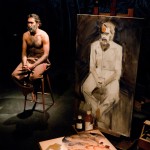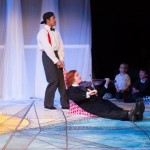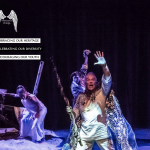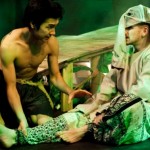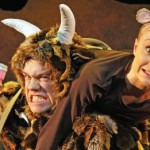Our reviewer takes Alannah (aged ten) and James (five) to a new version of The Jungle Book, with wonderful wild animals and a pretty convincing jungle above a pub. At the Lion and Unicorn Theatre.
The Lion and Unicorn Theatre in Kentish Town is currently showing an all-new adventure inspired by Rudyard Kipling’s The Jungle Book. But be warned! It contains “freaky” bits, according to James (aged five), who accompanies me. Together with his sister Alannah (ten), it is their first experience of a London fringe theatre above a pub. The occasion is especially interesting to them as they are on a visit to London from Australia.
The show is co-produced by Giant Olive and Simon James Collier, with Adam Dechanel writing and Collier directing this new version as well. Their interpretation sensibly and imaginatively limits the children’s classic to the “young man cub” Mowgli’s journey out of the jungle to live back amongst mankind. This artistic decision arranges the narrative through a series of encounters with flamboyantly beautiful wild animals, which are all affected by the main predator of the jungle, the tiger Shere Khan.
The strongest part of the production, according to my co-reviewers, is the way the animals move: that is, in more sophisticated terms, how their movement is directed and choreographed by Simon Collier and choreographer, Stacy Victoria Bland. The anthropomorphic qualities of each character are effectively realised through Cory Roberts’ mask and costume design. For instance, the elephants are created as a form of military patrol and the exotic birds as a bunch of co-travellers on their way to other parts of the globe.
Such transformations get the children’s attention, as Chuku Modu’s entrance as the vicious Shere Khan provokes a sense of fear. However, it isn’t quite clear to me why the tiger leaves off mauling the baby-laden basket abandoned on a jungle track. The moment is over in a flash. Nonetheless, the basket’s rescue by the panther, Bagheera (Samuel Treon), is credibly realised through the character’s sombre playfulness, as is the nurturing given to “young man cub” by the wolf pack.
Dmitry Ser is an engaging Mowgli, portraying the character with all the obstinacy of an adolescent. The rest of the ensemble of seven performers (Yiltan Ahmet, Augustina Amoa, Giuseppe Fraschini, Michael Gonsalves, Chuku Modu, Rishi Nair and Samuel Treon) take on nearly thirty characters between them. In the course of their performances they show their skill through inventively portraying each animal type through regional English accents and anthropomorphic gestures. In this context, it was hard to understand why Baloo the Bear is characterised through an American accent that sets up the character”s identification with the already existing Walt Disney movie rather than the newly imagined fictional world being created then and there on stage.
The production is also let down by clumsy stage entrances and exits that often break the magical mood which the performers conjure up on stage. As Alannah reflected, seeing an elegant snake walk backwards out of a side door definitely looks less than awesome. Despite rather cramped conditions though, set designer Cory Roberts manages to build in a sense of the jungle’s dynamic environment through the use of angled rises and lush green vegetation over a bamboo backdrop. But the stage can’t compensate for the real sense of confinement when the tall and athletic bodies of the cast work in their animal packs. At one point I did wonder what the effect might have been if the audience was seated on either side of a traverse performance space. Alannah, for instance, reflected that she wished to have been in the jungle rather than just in front of it.
All this said, the children’s overwhelming desire to see more of the show affirms that the producers, writer and the creative team have definitely shaped a good piece of children’s entertainment here. And, in imagining how an alien child can be loved and nurtured by surrogate parent, they have given rise to a wondrous way of looking at what it means to belong to a particular place, live in a particular family or tribe from which an individual emerges to encounter the risks and dangers a new life.
Date reviewed: Thursday 5th December 2013
